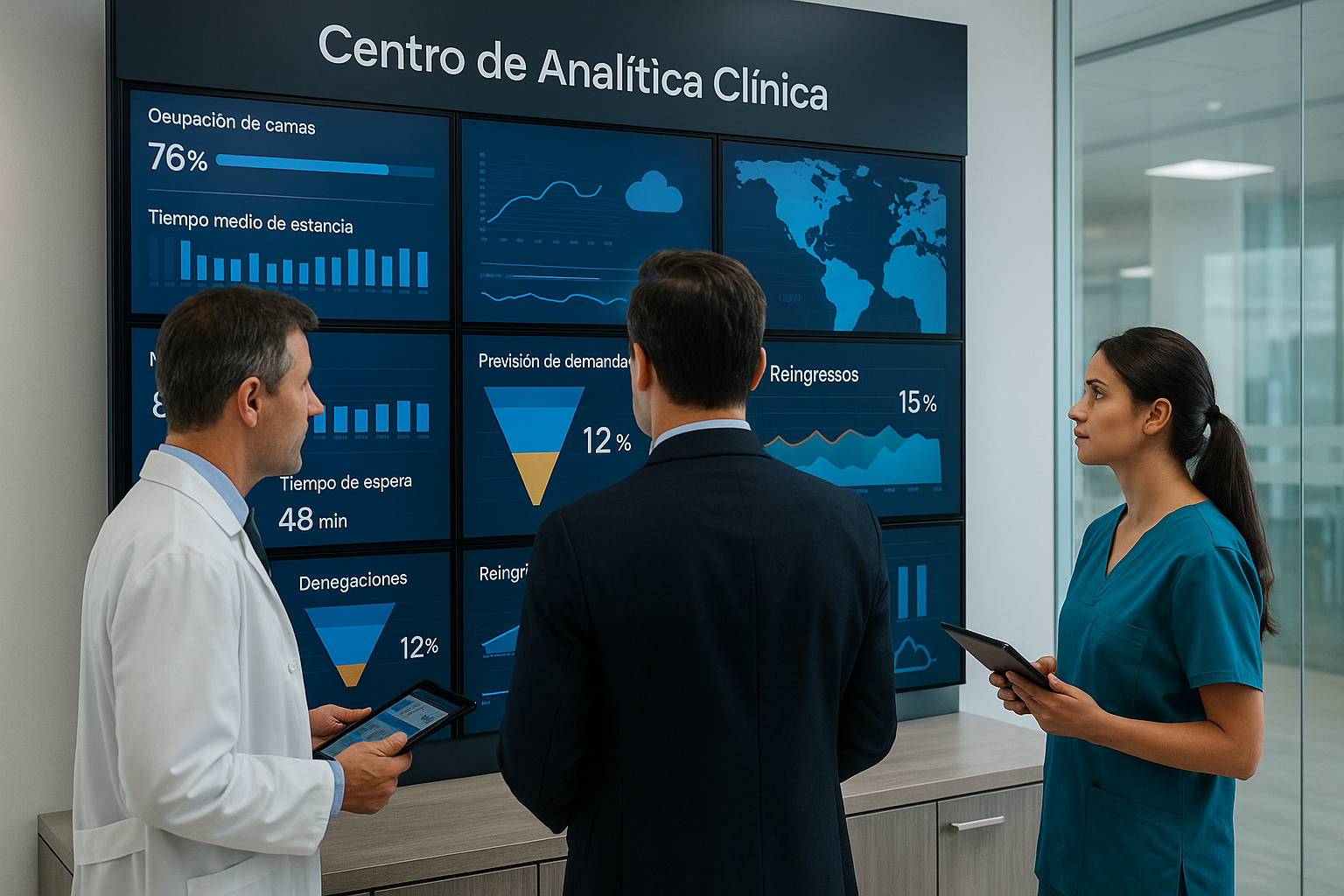Artificial intelligence (AI) has moved from promise to operational advantage
inside the EHR: it speeds documentation, summarizes complex histories, extracts
clinically useful data, and strengthens patient safety with better-designed decision
support. Below is what’s already working (with 2024–2025 evidence) and how to
measure it.
1) Faster clinical documentation with less burden
Ambient AI (AI scribe) listens to the encounter (with consent), generates note
drafts, and reduces time spent in the EHR. Recent studies report shorter
documentation time and less after-hours work, with perceived improvements in
efficiency and clinician mental load. Large health systems (e.g., Kaiser
Permanente) report thousands of hours saved and a better clinical experience;
mainstream outlets have also covered this widespread adoption. (PMC, PubMed,
The Washington Post, The Wall Street Journal)
Even outside the U.S., evaluations of digital/AI scribes show gains in efficiency and
documentation quality. (JMIR AI)
KPIs: time spent on notes and in the EHR per visit, % of notes closed within the
workday, and mental-workload survey scores.
2) Data discovery in free text (NLP/LLMs)
The LLMs are extracting clinical entities (problems, meds, results) from unstructured
notes and can summarize clinical text; recent work shows strong performance
and, in some settings, LLMs rivaling or exceeding experts for
summarization—while emphasizing the need for human review. (PMC, MedInform,
SpringerOpen)
KPIs: time per note and in-EHR per visit; % notes closed in-shift; clinician burden
surveys.
3) Clinical–operational big data to predict and prevent
Models that combine notes + structured data (labs, vitals, treatments) improve
early prediction (e.g., 30-day readmissions) and enable actionable worklists;
2024–2025 studies show feasibility and gains when integrating nursing
notes—though results vary if deployment isn’t well embedded in workflow.
( MedInform ,medinform.jmir.org, PMC)
KPIs: AUROC/PR-AUC; lead time before event; % timely interventions and impact
(LOS, readmission).
KPIs: AUROC/PR-AUC; lead time before event; % timely interventions and impact
(LOS, readmission).
4) Patient safety: decision support that actually helps
The EHR-integrated CDSS—allergy/interaction checks, contextual validations,
medication reconciliation—reduce prescribing errors and adverse drug events
(moderate/low-certainty evidence overall). Good design is essential to avoid alert
fatigue. ( CNBIotecnología )
KPIs: ADEs per 1,000 patient-days; acceptance of high-value alerts; complete
reconciliation at discharge.
5) Governance and transparency: conditions to scale safely
The WHO issued ethics/governance guidance for large multimodal models
(LMMs) in health. In parallel, the US ONC HTI-1 rule requires algorithmic
transparency for certified Decision Support Interventions (DSI) in EHRs—a
regulatory “floor” to evaluate safety, equity, and effectiveness. (Organización
Mundial de la Salud, healthit.gov, National Rural Health)
KPIs: traceability of recommendations (why/who), citable sources, bias/drift
metrics, HTI-1 conformance.
6) What’s on the “near frontier”?
- Embedded discharge/visit summaries in the EHR with verification tooling
to reduce hallucinations and raise clinician-perceived quality. (JAMA
Network, MedRxiv) - An evolving regulatory ecosystem (e.g., HTI-1 attributes for DSI
transparency; public device/AI listings) guiding trustworthy deployment.
(U.S. Food and Drug Administration)
7) Risks and limits (and how to mitigate them)
Evidence flags potential inaccuracies and automation bias if controls are weak,
underscoring the need for clear UIs, clinical oversight, and safety KPIs for
generative tools in documentation and summarization. (JAMA Network)
How to land this in your hospital (fast checklist)
1. Concrete use case + KPI (e.g., −30% note time; +quality score; −Y ADEs).
2. Governance (clinical–IT committee, human-in-the-loop policy, DSI logging).
3. Continuous measurement (accuracy, perceived utility, bias, safety).
4. Incremental rollout (by service; biweekly feedback; scale what works).
Where CLARA (HarmoniMD) fits
- Assisted documentation (ambient/AI scribe) inside the EHR workflow.
- Data discovery: extraction of problems/meds/results and clinician-ready
summaries. - Worklists + predictions with explanations, traceability, and privacy
controls.
Conclusion
AI moves the needle when it’s integrated with the EHR, targets specific jobs-to-
be-done, and is governed by metrics. The combination of assisted
documentation, data discovery in free text, and actionable predictive models
helps reclaim clinician time, reduce adverse events, and anticipate risk. The edge
isn’t “having AI,” but operating it with transparency, KPIs, and human oversight
to turn data into safe, timely decisions.
Want to see it with your own workflows?
Book a CLARA (HarmoniMD) demo—or let’s talk about your project and map a
path with clear clinical and operational goals.



